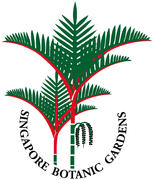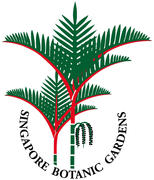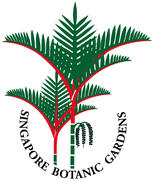Jacquemontia staplesii Buril
Jacquemontia staplesii Buril
Type:—BRAZIL. Bahia: Lençóis, about 7–10 km, along the main Seabra-Itaberaba road, 41º26’S 12º28’S, 27 May 1980, R. M. Harley 22710 (fl.) (holotype SP!, isotypes SPF!, K!, NY!).
Jacquemontia staplesii Buril
Type:—BRAZIL. Bahia: Lençóis, about 7–10 km, along the main Seabra-Itaberaba road, 41º26’S 12º28’S, 27 May 1980, R. M. Harley 22710 (fl.) (holotype SP!, isotypes SPF!, K!, NY!).
Jacquemontia grisea Buril
Type:—BRAZIL. Bahia: Barra da Estiva, Road on direction to Fazenda Brejões, 13º34’41’’S 41º23’41’’W, 1236 m alt., 3 July 2004, E.R. de Souza & M.N.S. Stapf 473 (fl.) (holotype HUEFS, isotype SP).
Jacquemontia macrocalyx Buril
TYPE: Brazil. Bahia: Parque Est. Morro do Chapéu, Lagedo Bordado, 11º16'20" S, 41º05'05" W, 736m., 6 Feb.2011, B. S. Amorim, K. Mendes, D. Moura 752(holotype, UFP; isotypes, SP, MO).
Jacquemontia chrysanthera Buril
Type: Brazil. Bahia: Mun. Caetité, near Brejinho das Ametistas, caatinga, 14°11′60″S 41°39′36″W, 13 Feb 2009, M. T.Buril, B. Amorim, A. Benko, G. Cruz, D.Pinangé, J. Gitai, M. I. Martins & K. Veiga224 (holotype: UFP; isotypes: NY, SP).
Buril, M.T. & Alves, M. 2011. A new species of Jacquemontia (Convolvulaceae) from northeastern Brazil. Brittonia, 63 (4): 436–441.
Jacquemontia robertsoniana Buril & Sim.-Bianch.
Typus: Brazil, Bahia,Mucugê, Serra do Esbarrancado, 12°43'S 43°30'W,17 April 2005, Conceição & Cardoso 1293 (holotypus HUEFS!).
Buril, M.T.; Simão-Bianchini, R. & Alves, M. Jacquemontia robertsoniana (Convolvulaceae), a new shrub species from Brazil. Kew Bulletin 67: 1-5.

Presumed to be a native of the West Indian Islands, cultivated throughoutthe tropics in gardens for ornamental purposes.
Austin, D.F. 2005. Convolvulaceae in Staples, G. & D. Herbst. 2005. A tropical garden flora. Bishop Museum Press.
Ipomoea horsfalliaeHook., Bot. Mag. (1834) plate 3315.
Ooststroom, S.J. van & R.D.Hoogland. 1953. Convolvulaceae in FloraMalesiana 4: 484.

West New Guinea, SW. Celebes.
River banks, up to 100 m elev.
Ipomoea asterophora var. subglabra Ooststr., Blumea 3 (1940) 563.
Ooststroom, S.J. van & R.D.Hoogland. 1953. Convolvulaceae in FloraMalesiana 4: 484.

Rather few species of Ipomoea are stellate-hairy; in Asia/Malesia this is the only one. In South America I. bonariensis is the outstanding example. In Africa ca 12 stellate hairy species are assigned to a distinct genus, Astripomoea.
Kangean Islands, Moluccas (Ceram), New Guinea.
River-banks, up to 100 m.
KEY TO THE VARIETIES
1. Leavesdensely covered with stellate hairs on both surfaces; stems with similar hairsmainly at the nodes
var. asterophora
1. Leaves with stellate hairsbelow on the nerves only, or entirely glabrous; stems with similar hairs overthe whole surface or only at the nodes. var.subglabra
Ipomoea asterophoraOoststr., Blumea 3 (1940) 561.
Ooststroom, S.J. van & R.D.Hoogland. 1953. Convolvulaceae in FloraMalesiana 4: 484.

North Australia, SE. New Guinea, and SW.Celebes.
In open savannah-land and in
savannah-forests, climbing up grasses etc., ca 15–150 m elev.
Ipomoea graminea R.Br., Prod. (1810)485.
Flowers openingin the evening.
Ooststroom, S.J. van & R.D.Hoogland. 1953. Convolvulaceae in FloraMalesiana 4: 479.

India to NE. Australia, Philippines (Luzon island, IlocosNorte province).
In grasslands at low altitudes.
Ipomoea diversifolia R.Br., Prod. (1810) 487.
Ooststroom, S.J. van & R.D.Hoogland. 1953. Convolvulaceae in FloraMalesiana 4: 479.
Pharbitis laciniata Dalz. in Hook., KewJ. Bot. 3 (1851) 178.
Ipomoea laciniata (Dalz.) C.B. Clarkein Hook.f., Fl. Br. Ind.4(1883) 200.
Ipomoea horsfalliae was described from plants cultivated in England and the precise wild origin is unknown, though it has been widely supposed to be somewhere in the West Indies, perhaps Jamaica. This species is cultivated world-wide in the tropics as a flowering climber. There is speculation that cultivated plants may be hybrids differing genetically from the wild populations. Certainly cultivated plants rarely produce capsules or seeds.